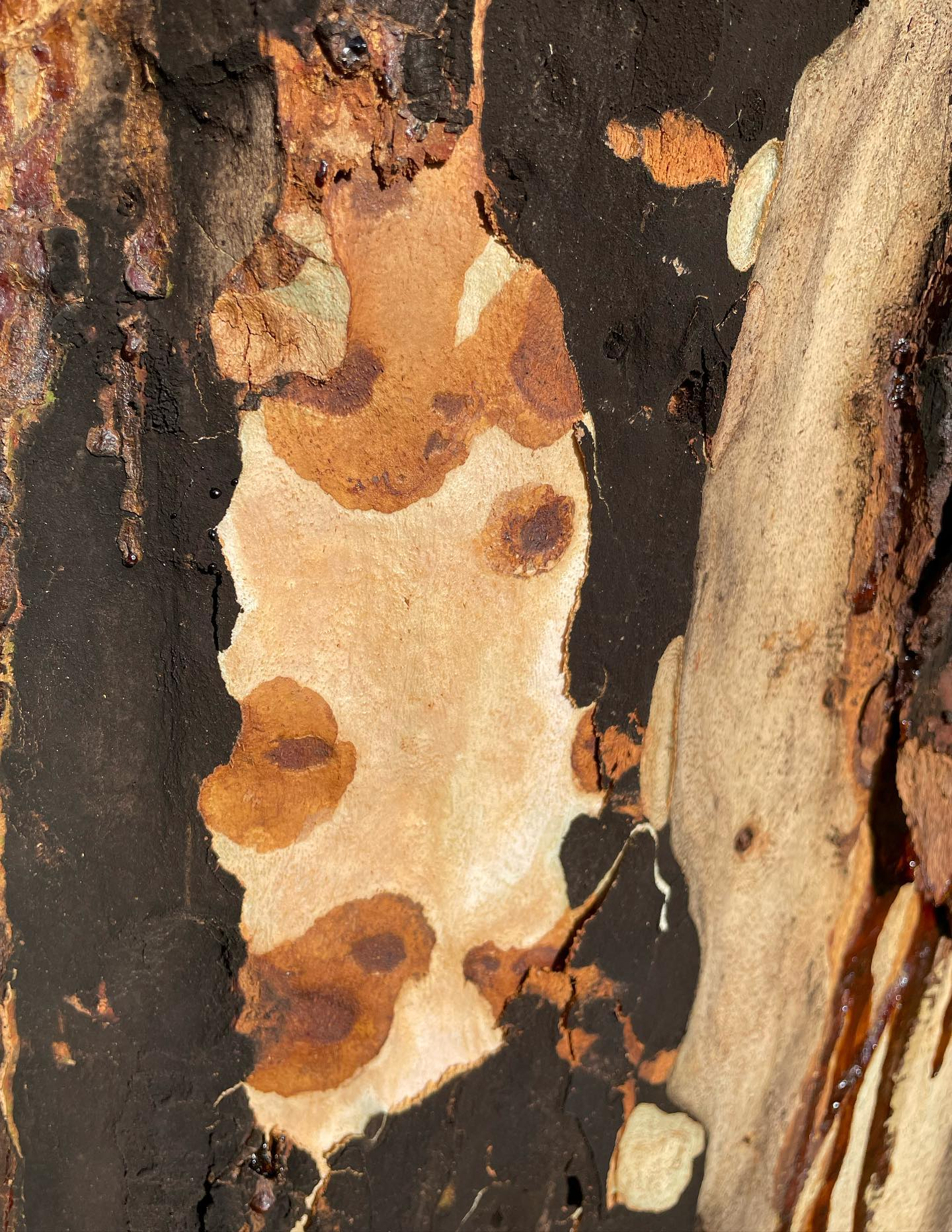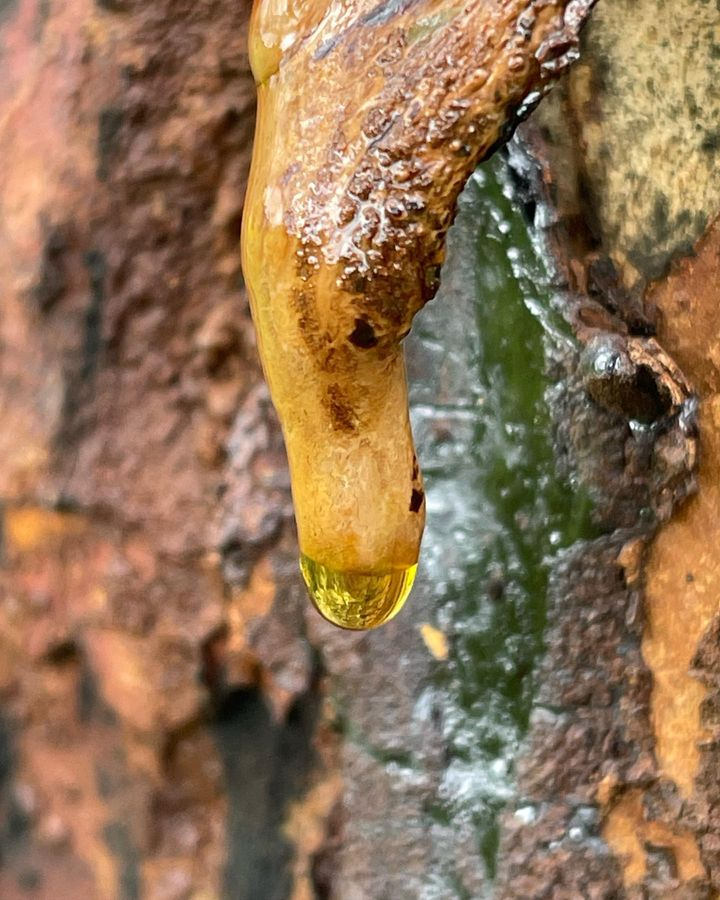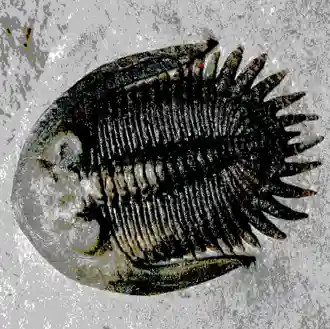from I and Eucalyptus
Susan M. Schultz
1
If there is no I as such, then who are you? I contemplate a tree. I am not such as the eucalyptus promises to be. But much as time enters a photograph as blur, the eucalyptus enters as tar, as sheets of bark separating from the trunk, as greens and browns and the reflected red of my cap. Jewel sap, sap as trap (leaves and geckos stuck), black when it’s dry, brown after the rain. Stained, solitary amid the monkeypods. Standing near the swimming pool’s chain link, an invasive of one. The monkey pods bend their branches, braiding shadows on green grass. The eucalyptus is tall and stiff, casting no shadow that is not the stickiness of tar. A rock at its base black with such, two small brown leaves its wide eyes. Whatever I might be stands in relation to whatever the eucalyptus is. My dog gets bored by these ritual visits, despite the scent. It is like an egg you think you’ve seen until you take its picture. Photographs trace a border between seen and unseen, real and surreal. I take them because I see something that is something else again when I download it. (This used to be called developing.) The tree’s undoing is development, almost a narrative, if we could hear it in words.
If relation is reciprocity, then we're in relation, this self a blurred egg, this tree its peeling skin. One wonders if the tree feels pain at its self-loss, each day a newly detached wall of bark, smothered in black goo. I have come to think of self-loss as a mixed state, best described apart from loss and gain, terms capital imposes on us. The eucalyptus was planted to make money, but it’s failed, loitering on the lawn beside the community pool. Freed from the economy of planks and paper and wind screens, it claims an economy of meaning, which is itself a seesaw process. What the image creates sometimes is a place that sits between color and meaning, like the space between the blackened bark and the light color of the tree. Between the meaning and me is abstraction. It’s unconsidered, no artist to write its plot, or take its measurements. What to make of the tree’s art is mystery. Stories are how we solve mysteries (so often crimes) but these leave us puzzled. I can see a face in the movement of sap against the jagged bark, but I know it’s not a face. Is it accident? Does accident depend upon there having been an intention, or can we make an accident of what appears to us as accident already? I and eucalyptus fail to communicate, though we commune. After an arbitrary last photo, my dog and I return to the side walk. The side is of a road, but we’ve been on the other, the green side. My shoes are covered with seeds acquired earlier in higher grass. My dog carries the promise of a weedy afterlife on her gray haunches.

6
“Perhaps I myself am the enemy who must be loved.” Carl Jung. The sentence presumes an “enemy.” It presumes that enemies can be loved, and that by loving them they dissolve. It’s the Henry James School of Buddhism I’m in; we tell the stories of our actions, then think about those actions, and then think again about how we blew it, act again in (or not in) kind, rinse and repeat. In the tragic farce of daily life, we are both actor and spectator, and we know the spectator to be an actor, rather like the baseball umpire who refused to shake a manager’s hand. His refusal inserts him into the game he’s there to represent behind the curtain of his chest protector. No one to protect us now: over half of teenage girls have considered suicide. The tree self-destructs, though that is its process. The girl self-destructs, though that is part of ours. The tree stands alone, like an old woman who believes she can still drive her car, and that’s the pathos of it.
My You acts on me as I act on it. Acts like a tree with two trunks, the one who talks and the other who listens. Tim said, Susan, half your pieces are about listening, while the other half are about arguing. It’s a character feature. The It that is my kindness makes a You of me. The You that is angry, makes an It of us. I can’t say it’s balance, but it’s as close as I come these days. One pan holds as much flour as the other can bear to pull up to level. When we get to level, we’re not happy there. It was so much more fun jumping up and down, telling only enough gossip to make everyone curious. Curiosity’s crucial to your practice, but not the niele form of it, googling friends and relatives to find what traffic violations haunt their digital records. Or worse. Curiosity with no malice seems best, wanting to know more so that sympathetic joys and sorrows appear like colorful beads on a long piece of dental floss. Is Eucalyptus curious? May I interview you to find out? When you respond with reflections of color and not thought, what am I to do with that? Am I given total freedom or has a trap been set for me? Do trees cancel those of us who fail to understand their need for identity positions? Long considered invasive, the eucalyptus has a cross to bear in this regard. The very thing that renders its peeling bark beautiful is what speeds a forest fire towards habitations made of better woods, words. The tree must have a sense of itself as misunderstood, alone in this grove of monkeypods, their trunks dancing upward. Eucalyptus stands like a Puritan, straight, tall, solitary. It has work to do, but some rejoice when it’s cut down. Another in this park was. I don’t remember that, which tells me something.

